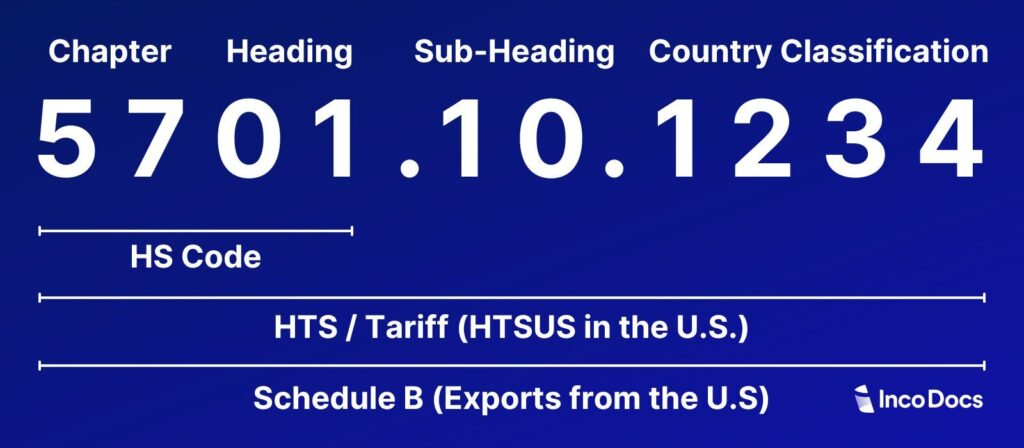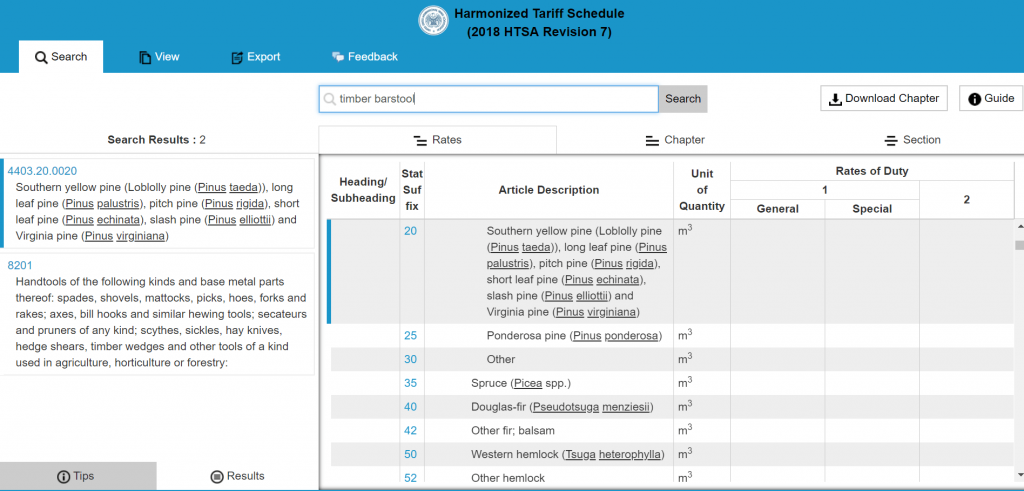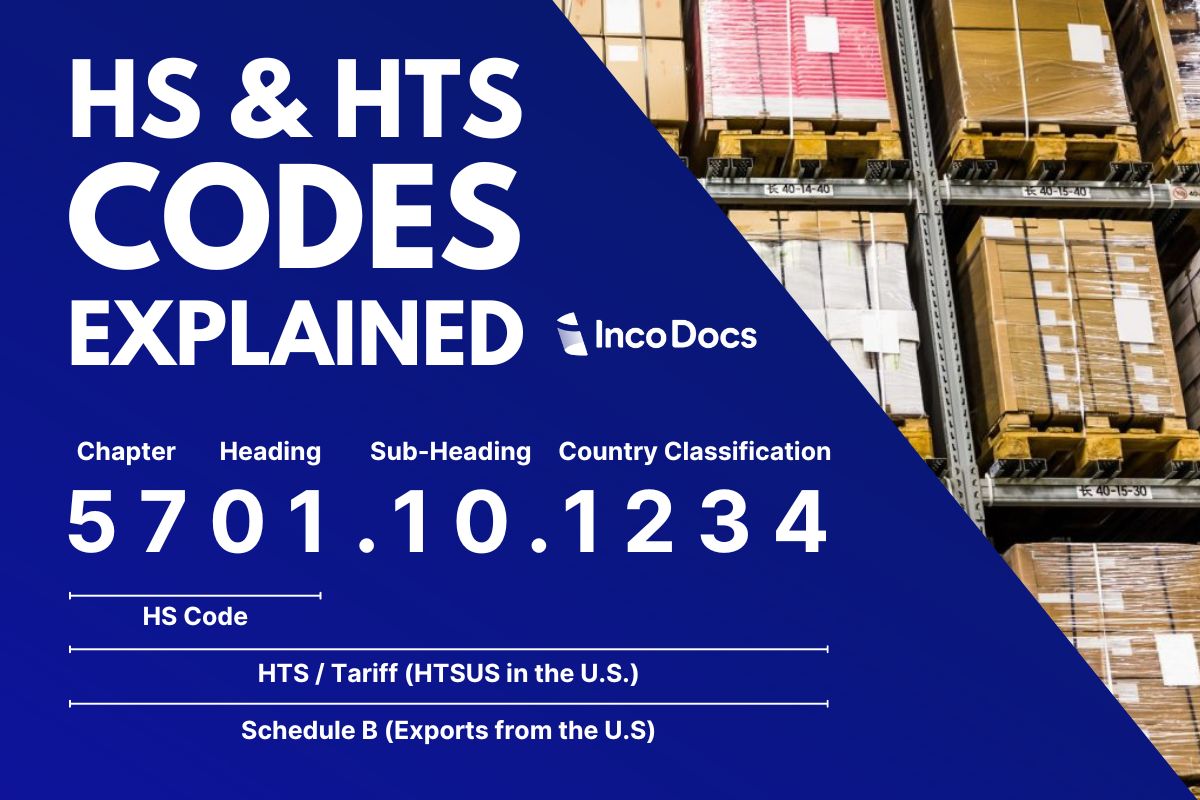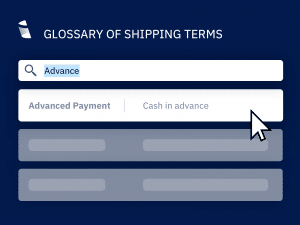A HS code or HTS code plays such a vital role in International trade. However, the system of codes and jargon involved around the these codes can make it difficult to classify and understand. In this article we explain the common terms that are used throughout the customs clearance process so that shippers can meet regulations and have a better understanding of global trade.
What is a HS code and HTS code used in global trade?
The HTS code or HS code are part of a worldwide standardized system of classifying goods in international trade. They are also know as a Harmonized System Code or a Tariff Code. These are significant unique numbers that are used to identify and determine the different types of products that have been shipped around the world. These codes contain a minimum of 6 digits and can be up to 10 digits long. Customs departments and governments around the world will use them to correctly identify and clear products through customs departments around the world.
As of July 2012 over 206 countries, territories and economic or Customs unions are applying HS in practice. Over 98% of the merchandise in international trade is classified in terms of the HS. HS codes are used for goods only and not relevant for services.
Why are HS codes and HTS codes important for global trade?
The Harmonized System code for goods, or it’s full name – the Harmonized Commodity Description and Coding System – was adopted by the World Customs Organisation (WCO) in 1983. It has been used by member countries since then to classify goods in international trade for Customs tariff purposes. The system is reviewed periodically for adjustments to take account for advances in technology.
HS and HTS codes streamline supply chain operations by enabling accurate product identification and clearance for shipments crossing international borders. Apart from that, HS codes are extensively used by governments, international organizations and the private sector for a number of other purposes. These purposes include trade statistics, internal taxes, trade policies, monitoring of controlled goods, rules of origin, freight tariffs, transport statistics, price monitoring, quota controls, compilation of national accounts, and economic research & analysis.
What are the differences between HTS and HS Codes?

At first glance, HS and HTS or HTSUS codes seem similar. But there are key differences. The Harmonized Schedule (HS) code is a 6-digit universal code used worldwide. The HTS classification has an extra 4 digits making a total of 10 digits, for country-specific details.
So while a HS code is 6 digits (Example: 6109.10), a HTS Code includes 10 digits (Example: 6109.10.0012). In the USA a 10 digit code is referred to as a HTSUS code.
When classifying goods using HS or HTS codes, customs brokers must adhere to the General Rules of Interpretation and other guidelines provided by local government authorities to ensure accurate and compliant classifications.
What is a HTSUS Code in the USA?
It is important to know that the full harmonized tariff schedule code used for imports into the United States is often referred to as the HTSUS code. HTSUS codes are administered by the U.S. International Trade Commission and follow the HS code structure, adding an extra 4 digits for a total of 10 digits. When importing goods to the United States, importers must use the full HTSUS code using 10 digits.
What are Schedule B Codes?
The Schedule B number is a 10-digit code also based on the initial 6-digit HS product classification, but used specifically for U.S. exports. The first six digits match the universal HS code. The remaining four digits provide additional detail for statistical export purposes.
Schedule B codes help the U.S. government track exports. While both HTSUS codes and Schedule B numbers are utilized for tracking imports and exports respectively, it is important to note that Schedule B numbers cannot substitute for HTSUS codes when importing goods into the United States.
Schedule B codes are specifically for export declarations and statistical purposes. Here’s a simple example.
- The HS code for a type of carpet is 5701.
- For U.S. exports, the Schedule B code could be 5701.10.1234.
- For U.S. imports, the HTSUS code may be 5701.10.5678.
Companies exporting goods must use the proper Schedule B code on shipping documents and when filing export information. Using the incorrect code type could lead to delays or penalties. US exporters can find schedule B codes by using the Shedule B Search Engine.
Why must shippers understand the harmonized tariff schedule and harmonized tariff code?
Shippers must correctly identify and classify goods so that the correct import duty rate will be applied in the country of import. If the incorrect classification of goods is made, shippers can be paying a higher or lower rate of import duty. As a result, customs authorities will issue fines and financial penalties for incorrect classification of goods.
On top of that, additional costs for wharf and storage charges can also be incurred if there are delays due to incorrect classification.

How is the HS code used throughout the customs clearance process?
The supplier of goods will usually include the product HS code on their shipping documentation such as Commercial Invoices and Packing Lists. It’s important to note that in some cases there may be slight discrepancies between the HS Code suppliers use and the correct HS Code in the country of import. Therefore you should contact your freight forwarder or customs broker to get help classifying your tariff code. Import duty rates vary for every country, so it is vital that you consult with a professional.
The clearance agent arranging the customs clearance will use this number to submit information to the customs department. They do this to confirm the rate of import duty (%) or import tariff that is payable on imported goods. Therefore it’s important to give your customs clearance agent as much detail as possible about the products so they can be cleared correctly through customs.
How do you find out the correct HS Code list for imported products?
Customs Brokers and freight forwarders employ trained experienced operators who deal with classification system and issues daily. For this reason, it’s best to leave it in professional hands because opinions frequently vary on what is the “correct” classification.
When goods are declared to Customs for either export or import clearance, the owner is responsible for the correct classification of the goods. Sometimes suppliers share this information but it’s not always reliable with accuracy. Customs authorities will provide a binding legal ruling on the correct classification, if requested, referred to as a Tariff Advice.
For the U.S. you can search this Harmonized Tariff Schedule website to search the HTS code list and tariff code yourself.

How do Free Trade Agreements affect import duty rates?
Import duty rates will vary depending on the product classification codes assigned to the goods, as well as any applicable Free Trade Agreements between the countries involved. These rates will be influenced by bilateral or multilateral trade agreements which can result in favorable duty treatment.
Therefore, when the country of export and country of import have a current Free Trade Agreement in place, import duties can be reduced or eliminated. In this case, the exporter will have to provide the importer with a Certificate of Origin document. This document will then be used in the customs clearance process to reduce or eliminate import duty fees.
Details on how the HS code system is structured.
The HS is a nomenclature for the coding, description and classification of goods/products in international trade. It consists of over 5,000 commodity groups. These are structured into 21 Sections (Sections I to XXI) and 97 Chapters (1 – 97).
The HS code system is a logical progression of commodities. It starts in Chapter 1 with live animals, raw materials and minerals in early Chapters. Then it progresses through to manufactured goods, machinery and electrical goods, then Chapter 99 which covers works of art.
Within each chapter, there are 4-digit headings and 6-digit subheadings. These provide more product specifics. The first two digits of a HS code identify the chapter that a product belongs to. For example, under Chapter 1, Heading 0101 covers live horses, mules and hinnies. Subheading 0101.21 narrows it down to live purebred breeding horses.
So a full HS code combines details from sections, chapters, headings and subheadings. This allows over 5,000 product groups to be classified precisely in just 6 digits.
The Tariff classification (HS code) is determined using the Customs tariff schedules. It consists of 6 digits but can be subdivided further to 8 digits where countries generally set their duty rates. Goods are classified by factors like form, function and composition. The first six digits of an HS code will be common for all countries. However, the additional 4 digits following this will not be the same in all countries even if your product is the same.
The World Customs Organization reviews and updates the HS code product classification every five years to assign new codes for emerging products and technologies.
Are you involved in Global Trade?
Our team created IncoDocs to make global trade easy. IncoDocs allows companies in over 120 countries to streamline their shipping document process. Try it for yourself today.







